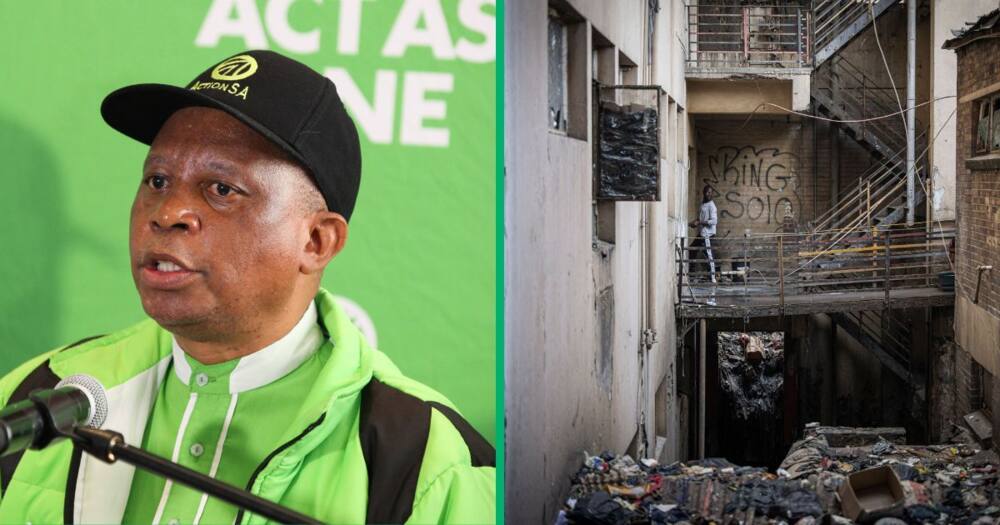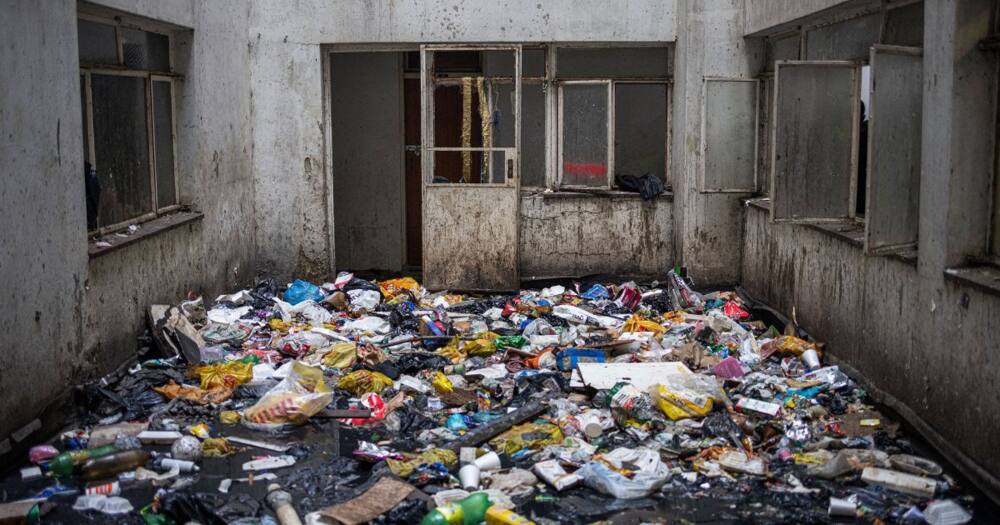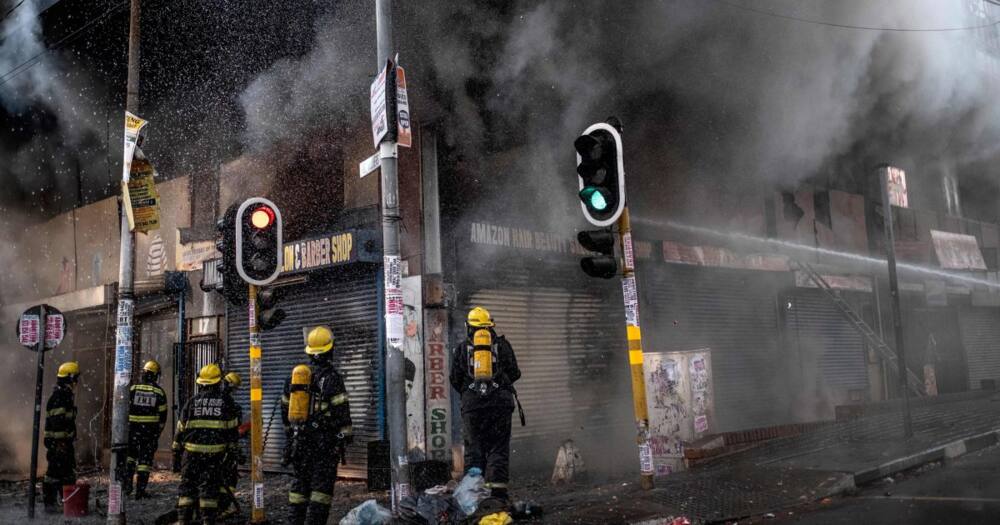Herman Mashaba Disappointed Johannesburg CBD Fire Tragically Took 77 Lives: “Totally Unnecessary”
- Former Johannesburg Executive Mayor Herman Mashaba has been vocal about hijacked buildings during his tenure
- Speaking exclusively to Briefly News, the ActionSA leader detailed the plan he formulated with the private sector to reclaim buildings
- Mashaba elaborated on why the City of Johannesburg is still struggling to stop illegal occupation of inner city buildings
- In August, 77 people died in Marshalltown, Johannesburg, when a fire broke out in the five-storey Usindiso building
PAY ATTENTION: Let yourself be inspired by real people who go beyond the ordinary! Subscribe and watch our new shows on Briefly TV Life now!
The government claimed South Africa had no housing crisis shortly after 77 people died in a fire at a hijacked Marshalltown building. But ActionSA leader and former Johannesburg Executive mayor Herman Mashaba painted a different picture when he spoke to Briefly News.

Source: Getty Images
The City of Johannesburg housing crisis has been in the spotlight over the past few weeks following the devastating fire at the hijacked building. The fire broke out in the early hours of 31 August at the Usindiso building, leaving countless injured and others displaced.
In an exclusive interview with Briefly News, the former mayor of Johannesburg expressed his anger at the loss of lives:
"I'm really disappointed with the loss of the 77 people. It was totally unnecessary. And what hurts me most is the fact that that particular building is not the only one where people are living under those conditions."
PAY ATTENTION: Fuel your passion for sports with SportBrief.com. Click here to discover the latest sports updates!
ActionSA's Herman Mashaba says housing crisis is more severe than he thought
Mashaba said when he became mayor in 2014, he quickly realised that the housing crisis in Johannesburg was more severe than anticipated.
He explained that at the time, the City of Joburg had a 300 000 housing backlog, but the municipality could not do much because it does not have jurisdiction to deal with the issue. Only the national government has the power to deal with the problem.
Mashaba said the municipality relies on money from the provincial government, allocated by the national government, to build houses.

Source: Getty Images
Mashaba alleged that before he became mayor, the municipality only built 2 000 houses a year.
"The maximum they've ever built a year was 2 000 houses. Imagine you are sitting with a 300 000 housing backlog, and the best you can ever get to build for your residents is only 2 000?"
Johannesburg's abandoned buildings have potential to solve housing crisis
With the housing crisis at hand and very little progress being made to alleviate the housing backlog, Mashaba said he realised the abandoned and hijacked buildings in the inner city could help solve the problem.
So, on 1 December 2016, 100 days after he became mayor, Mashaba announced the Inner City Rejuvenation Project. The plan recognised that the government did not have the money to revamp abandoned and hijacked buildings and needed help from the private sector.
Mashaba said some of these hijacked buildings were in deplorable conditions and not fit for human beings to live inside them. They needed to be rebuilt.
"There must be close to 200 such buildings where human beings live worse than pigs in them," said Mashaba.
In a previous article, Briefly News reported that authorities said the hijacked building in Marshalltown was like an informal settlement, indicating more than 80 shacks were found on the property.

Source: Getty Images
Mashaba later established a unit within the Group Forensic and Investigation Services (GFIS) to deal with hijacked buildings specifically.
"So there was a unit led by one of the senior prosecutors or investigators to conduct an audit of all the hijacked, derelict and abandoned buildings in the City of Johannesburg," said Mashaba.
With the audit in hand, Mashaba held strategic planning meetings with stakeholders, including the private sector, to develop a plan. The first step required finding the owners of the abandoned or hijacked buildings.
If they could not identify the owners, the City decided to expropriate those buildings and hand them over to private sector businesses on a long-term lease with the city.
The private sector businesses would then be given a property to refurbish. These businesses would then have to inform CoJ how much they would spend on refurbishments and how many jobs they would create during and after construction.
Mashaba explained that the plan was ready to move forward, but in August 2019, he learnt that his then-party, the Democratic Alliance (DA), and the ANC were holding secret meetings to have him removed.

Source: Getty Images
Because of the motion of no confidence against him, Mashaba said he decided to resign as the mayor of CoJ. However, before his departure, Mashaba said the GFIS discovered over 600 hijacked and abandoned buildings in the inner city.
They managed to return 44 properties to their rightful owners and over 150 buildings were in the process of being handed over to the private sector. His administration also planned to lease out 100 properties annually until the problem was solved.

Read also
Joburg building blaze sparks call for action from Cyril Ramaphosa, SA president wants housing crisis addressed
But the plan was quickly shelved when he left office.
"When I left, 154 properties were already expropriated, given to the private sector on long-term leases to build affordable accommodation for our people," said Mashaba.
He added that the 154 buildings would bring in an investment of R32 billion, create over 14 000 affordable housing units and close to 22 000 permanent jobs.
City of Joburg tries to tackle hijacked buildings after tragic fire
Following the fire in Marshalltown, current Joburg Mayor Kabelo Gwamanda and his team visited various hijacked buildings with hopes of rehousing the displaced residents.
The inspections led to the arrests of 22 people, including a Joburg councillor, who allegedly hijacked a JMPD building. The Ward 65 councillor, Nkosikhona Khanyile, has since denied the allegations and plans to sue the city for defamation, reports News24.
The City of Joburg also intends to cut electricity at hijacked buildings this week to take a tough stance against the illegal occupation of these buildings.

Read also
Joburg fire: Minister Khumbudzo Ntshavheni says giving illegal immigrants housing is not government’s job
Angela Rivers, the chairperson of the Joburg Property Owners and Managers Association, said there are about 57 hijacked buildings in the inner city, with some belonging to the state.
PAY ATTENTION: Сheck out news that is picked exactly for YOU ➡️ click on “Recommended for you” and enjoy!
Source: Briefly News




